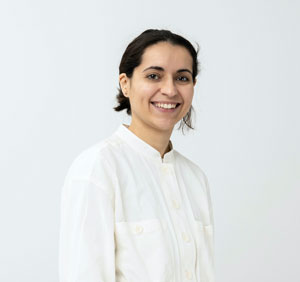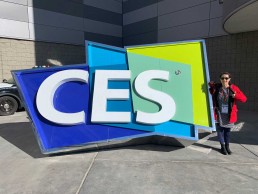For our 8th year in a row, Tuxera headed out to Las Vegas for CES (Consumer Electronics Show). As in previous recent years, our focus there was looking at automotive technology and engaging our partners in meaningful discussions about their challenges in automotive edge storage. Here’s some of our observations and reflections from the show floor – which give you a different perspective beyond all the media hype surrounding the event.
Reliable storage software is needed now more than ever
 Tuukka Ahoniemi, CEO, Tuxera
Tuukka Ahoniemi, CEO, Tuxera “My takeaway was there’s a lot of place for file system technology to do good work. That said, there’s a lot of education to be done. People in the automotive industry especially are now waking up to all the challenges in handling and storing all this data coming into cars. There are a lot of specific workload requirements, and automotive companies are now starting to understand that they can’t just use what comes off the shelf or is available for free without knowing how to configure and set up and optimize for the type of data workloads they’re working with. They need our expertise now more than ever before, and we’re glad to be here to help.”
The pains of managing and storing data are felt across all industries
 Heather Goring, Sales director – Americas
Heather Goring, Sales director – Americas“It’s been interesting to see the shift in technologies at CES over the years. When I first started coming in the 90s, a lot of what you saw was truly embedded systems. Now we have robots on display that are scrubbing your windows and a lot of products coming from companies that I don’t necessarily see as technology companies.
Even though Tuxera was in the Automotive Grade Linux booth at CES, we not only talked to companies doing automotive projects, but also talked to a lot of different companies outside the industry: from energy, robotics, and farming, for example. All of them have storage challenges related to file systems, both with their internal flash memory and external storage. The conversations we had with them were amazing!”
Less hype, more realistic views toward autonomous driving
 Bernd Niedermeir, Head of Automotive Business Development
Bernd Niedermeir, Head of Automotive Business Development“From the show perspective, the atmosphere felt a bit different this year. At least with autonomous driving, most companies seem to have their feet back on the ground again – because we’re finding out that it’s not all that easy to implement. It’s now very much about electro-mobility and connected cars. The messages we’re seeing from the floor feel a lot more realistic than in past years. Also, always interesting to experience the South Hall with it’s extremely diverse set up – you can have a Chinese A.I. based Level 4 Autonomous Driving Software Stack company on the left side and next to it there is a booth with massage seats for the living room. But maybe they connect well after all because with autonomous cars the passenger’s seat might become a differentiator as well. ;-)”
CES is still the tech event to attend!
 Eva Rio, Head of User and Market Research
Eva Rio, Head of User and Market Research“This was my first time at CES. I was a bit dubious about the event as I kept hearing that in the past years it had started to decline. I personally felt this couldn’t be farther from the truth! I found the show to be really “down-to-earth.” I was able to have meaningful discussions and did not hear any buzzwords like the ones you often see in press releases. Every person I talked to was an expert in their field and spoke of their products with passion and expertise. I really appreciate that despite the hectic pace of the show, we were able to have face-time with our customers and partners. Also, as a tech enthusiast, I would never forget my first impression being on the floor, the chills of being surrounded by prototypes and unreleased products – from the concept cars of Mercedes, Sony, Ford to the foldable screens of Royole, the FBI and American Express booths – it’s just spectacular. CES is still the event to attend! It’s great for networking and learning regardless of what industry you’re in.”
No shortage of interest in automotive edge storage solutions
 Thom Denholm, Technical Product Manager
Thom Denholm, Technical Product Manager“This was also my first CES, and pretty overwhelming. It sprawls over several buildings in Las Vegas, with shuttle, Uber, taxi, and foot traffic evident between them. CES had a much larger automotive presence than I expected. There was less of a focus on autonomous vehicles than at the TU-Automotive Detroit show seven months ago, but perhaps that is because of a different audience. With the exception of the AGL booth, there was also less focus on what happens under the hood. That said, the various sensors, cameras, and cool new tech will all need somewhere to store all that data, even for a short time. We also had a presence at the GENIVI reception and it was worth the price of the flight itself. People were coming up to me non-stop to talk about one of our many file systems. FlashFX was also the focus of a few conversations. After three straight hours of talking, I nearly lost my voice!”
Welcome to the age of data-driven, voice-assisted everything
 Tiff Rossi, Head of Marketing
Tiff Rossi, Head of Marketing“I’m also a CES first-timer. One thing was very clear – we are now in the age of data-driven, voice-assisted EVERYTHING. And I mean anything and everything. I think the Amazon booth was the epitome of this trend, where we found baby formula canisters that had Alexa integration and could notify you if you’re running low on formula and order you new stock!
The car floor was some of the most dazzling marketing I have ever seen. Some companies like Nissan, Audi, and Ford brought actual car models they were about to release. Although I do have to admit, it felt like many of the car companies are playing catchup to deliver what Tesla already has driving out on the roads. Hyundai Mobis was showing their truly futuristic-looking M Vision S. And the Hyundai-Uber helicopter really made waves at the event – though I have trouble calling it a “flying car.” From the product demos, it appeared to be a solution to take over long-distance intra-state car rides and short-haul flights now made by jetliners. It was also coupled with a little transportation “pod” that could take you from your home to a flight depot. I think the “Hyundai-Uber-copter” was really the thing to see this CES!”
CES 2020 automotive technology walkthrough from Tuxera on YouTube.


